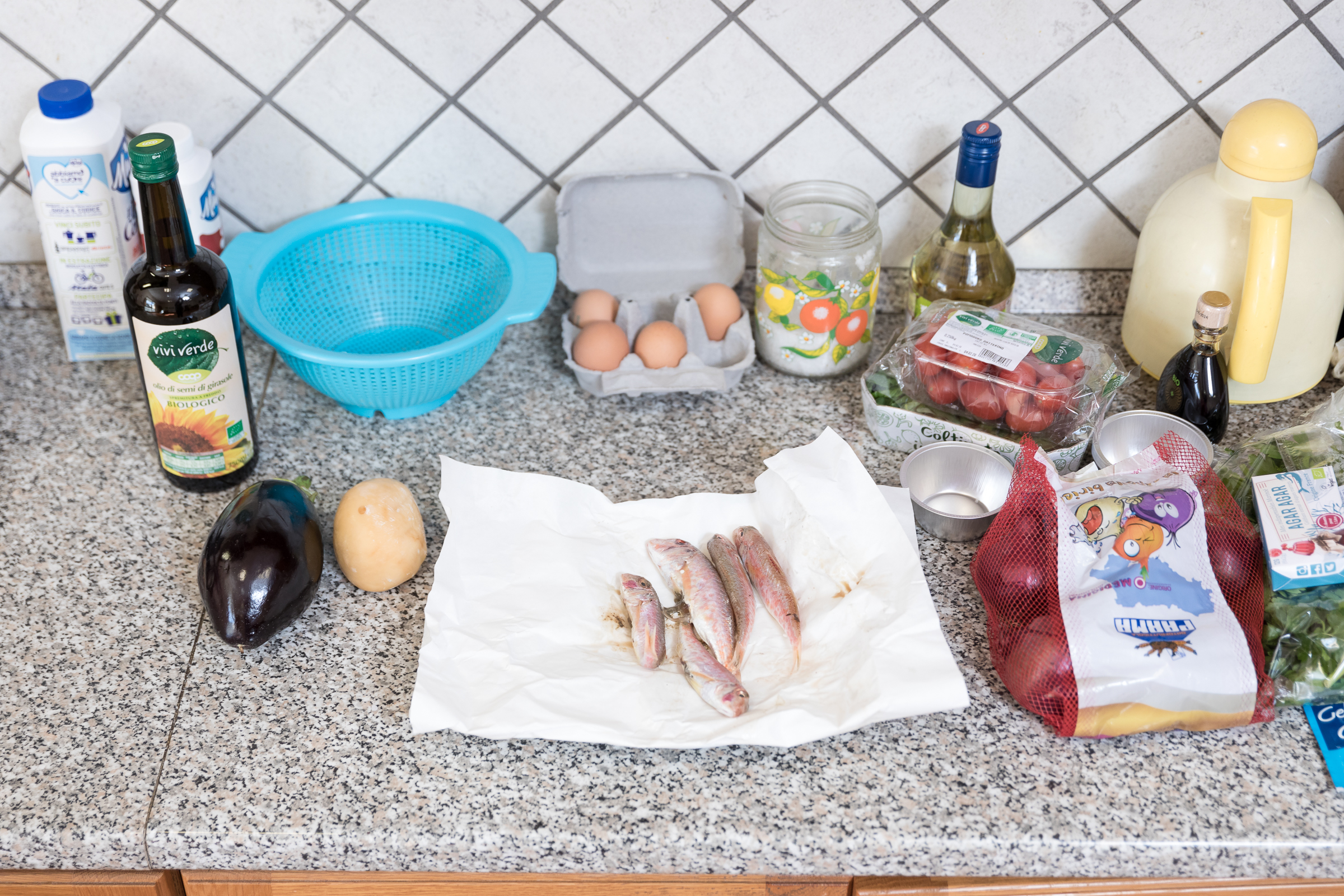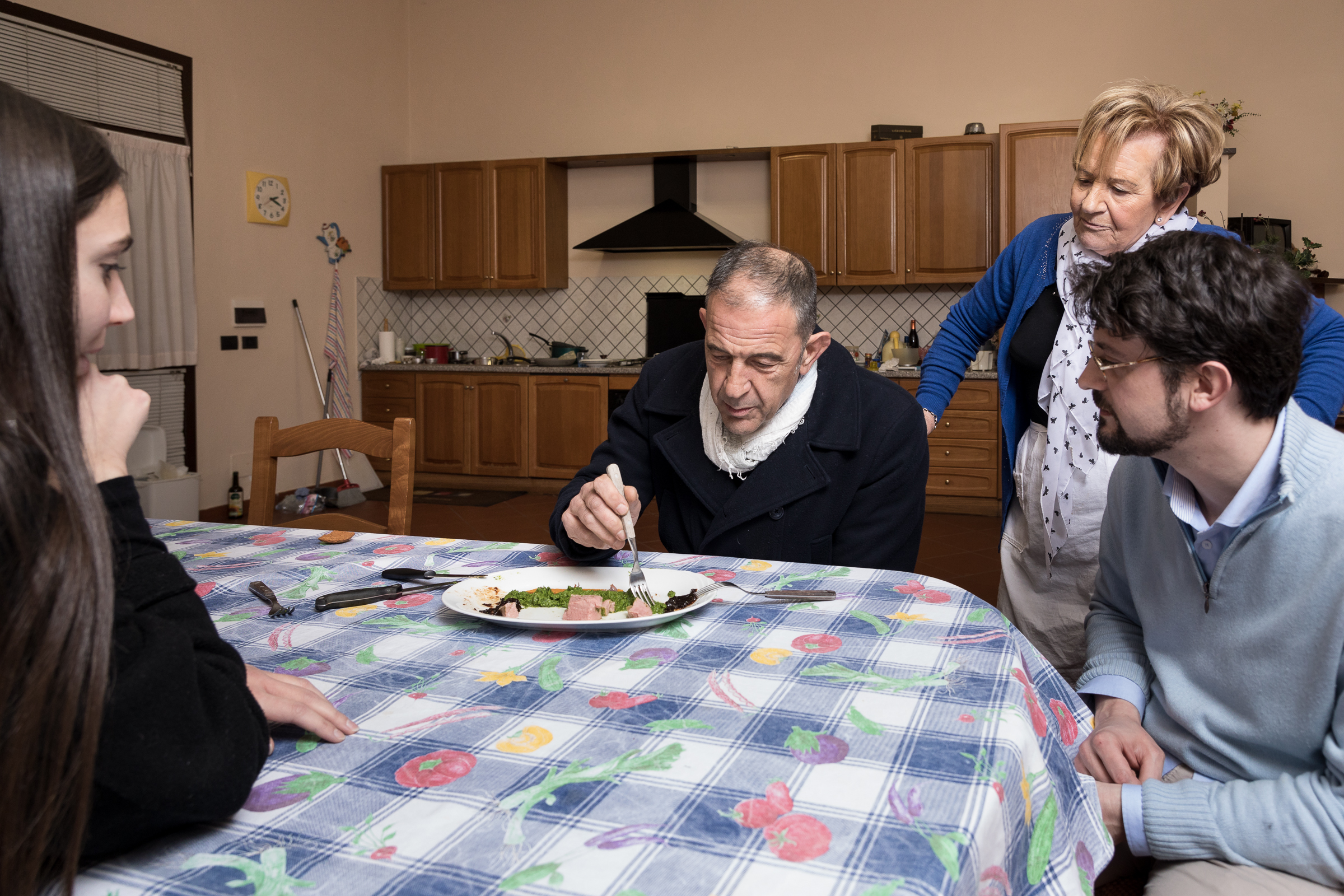This article originally appeared on VICE Italy.
Over the last decade, experimental cuisine has exploded in Italy. Once reserved for high society, restaurants serving foams and gels and barely recognisable versions of classic dishes have been sprouting up all over the country.
Videos by VICE
This new wave is in direct contrast to Italy’s famed love of letting a few simple ingredients shine, and let me tell you: my nonna Anna is not happy about it. So, earlier this year, I tested whether replicating three dishes from Michelin-starred Italian chefs would change her mind, or drive her mad.
If nonnas and Michelin chefs seem like an uneven matchup, it’s because they’re essentially playing different sports. The average Italian nonna boasts of tradition over experimentation, simplicity over complexity. Where an award-winning chef serves lobster with rice wine, tangerine and pak choi, an Italian nonna serves up fresh bread and tomato soup.
Putting my own nonna’s cooking skills to the test, I decided on Carlo Cracco’s marinated egg yolk, Antonino Cannavacciuolo’s red mullet with aubergines and provola cheese, and Massimo Bottura’s boiled-but-not-boiled meat (boiled meat is a Northern Italian specialty, but this updated version bakes the meat).

Convincing my nonna wasn’t easy: she doesn’t like innovation, especially when it calls into question her culinary authority. Eventually, she gave in after I promised, in writing, not to reveal her age in the article. She also wanted VICE readers to know that she was doing this because she “loves her grandson very much”.
The day before the experiment, I brought all the ingredients to her house. That was her first trigger. “There are too many,” she said. “How can you even taste all the flavours?” There was also an issue around the boiled meat recipe, which called for cooking the veal tongue in the oven at 63 degrees for 24 hours. “Who’s going to pay for the electricity?” Nonna gasped.

The following morning I found her sitting by the oven, watching over the veal tongue. She was in a better mood, so we went ahead with the marinated egg, which had to rest in a mixture of blended beans, kosher salt and sugar for seven hours.
Grandma was perplexed – we soaked 500 grams of beans overnight, cooked them for two hours, and we weren’t even going to eat them. “Not very smart,” she commented.

Next, we started on the fish. “I’m curious to see how the red mullet pairs with the provola cheese,” grandma said. After some cleaning and preparing, we combined the cheese with milk and heavy cream for the provola sauce. Then, we cooked the mixture in a double boiler and strained out the solids.
Once again, Nonna was disappointed with the amount of food waste. “Are we sure that chef Cannavacciuolo doesn’t reuse all this cheese?” she asked.
The original dish.
She proceeded to snack on the melted cheese while frying the fish, and ended up overcooking it. My nonna is a very proud woman (she went to the hairdresser before taking pictures for this article) and she doesn’t take well to failure. As she tasted the final dish, she had another go at Cannavacciuolo.
“I give this dish a six,” she said. “The flavours don’t go very well together.” She did, however, praise the chef’s attention to detail, including the step to protect the fish’s tail with aluminium foil before cooking it.



My grandmother was starting to feel the pressure. In a bid to redeem herself in the eyes of the judges – my sister, the photographer and I – she cracked on with preparing the egg yolk dish, which had to marinade until 4:30PM.
“I don’t understand how these chefs keep up with these complex preparations,” she said. “You need a secretary to remember when and how to cook things.”
To prepare the cheese soup for the dish, she grated the parmesan, boiled it in water and strained it again. Baffled by the instruction to keep only the liquid, she said: “Why do we have to throw away the parmesan? It’s the best part.”
I told her that modern fine dining often involves lighter dishes. She wasn’t convinced.

Ten steps later, it was time to cook the yolk in the oven between two sheets of paper. Nonna was disturbed by the final result: “It looks like soap. Cute.”
She was also impressed by the plating, but not by the taste. “The yolk has lost all its flavours and it has a waxy texture that gets stuck on my teeth,” was her verdict. “A sunny-side-up egg is better than this thing.”


Two dishes down, one more to go. While we waited for the veal tongue to finish cooking, we had to prepare four sauces (there was a fifth, which we eliminated to respect our €50 budget). Unfortunately, the first step – boiling white vinegar with sugar and salt – spread a terrible stink throughout the kitchen.
The original dish.
Nonna was pissed. In a symbolic mutiny against gourmet cooking, she secretly prepared the green sauce following her own recipe instead of its innovative variant. “I can make it better than chef Bottura, I’ll show you.”
She must have felt guilty about it, though, because she apologised for losing her cool. We made peace with a hug in front of the stove.

After two hours of chopping, mixing and evaporating excess liquids, we finally had the sauces to accompany the veal tongue. As she took it out of the oven, nonna was alarmed. “It still looks raw after 24 hours and a month’s worth of retirement money in electricity?” she yelped.
Cutting into it, the veal tongue was super tender and perfectly cooked, with all the flavours intact. She even loved the sauces, especially the onion jam. “Of all the meals we prepared, this is the only one that makes sense to me. The meat is much better than when you boil it,” she said. Nonna-approved.



At the end of the culinary journey, I wanted to know what she thought of modern experimental cuisine. Nonna reiterated that there was too much food waste – even though we think chefs probably use the scraps to make other dishes – and that the preparation methods were “uselessly overcomplicated”.
“How can you compare this to what I make?” she asked me. “Would you choose Cracco’s egg dish or my braised cardoons [a Mediterranean vegetable]? There’s no competition.”

The worlds of innovative and traditional cuisine seem irreconcilable and impossible to compare. Only time will tell who will win the face-off to establish dominance over Italy’s culinary future. My nonna’s stance was crystal clear: in the days after our experiment, she called me three times to tell me her kitchen still reeked of vinegar.




